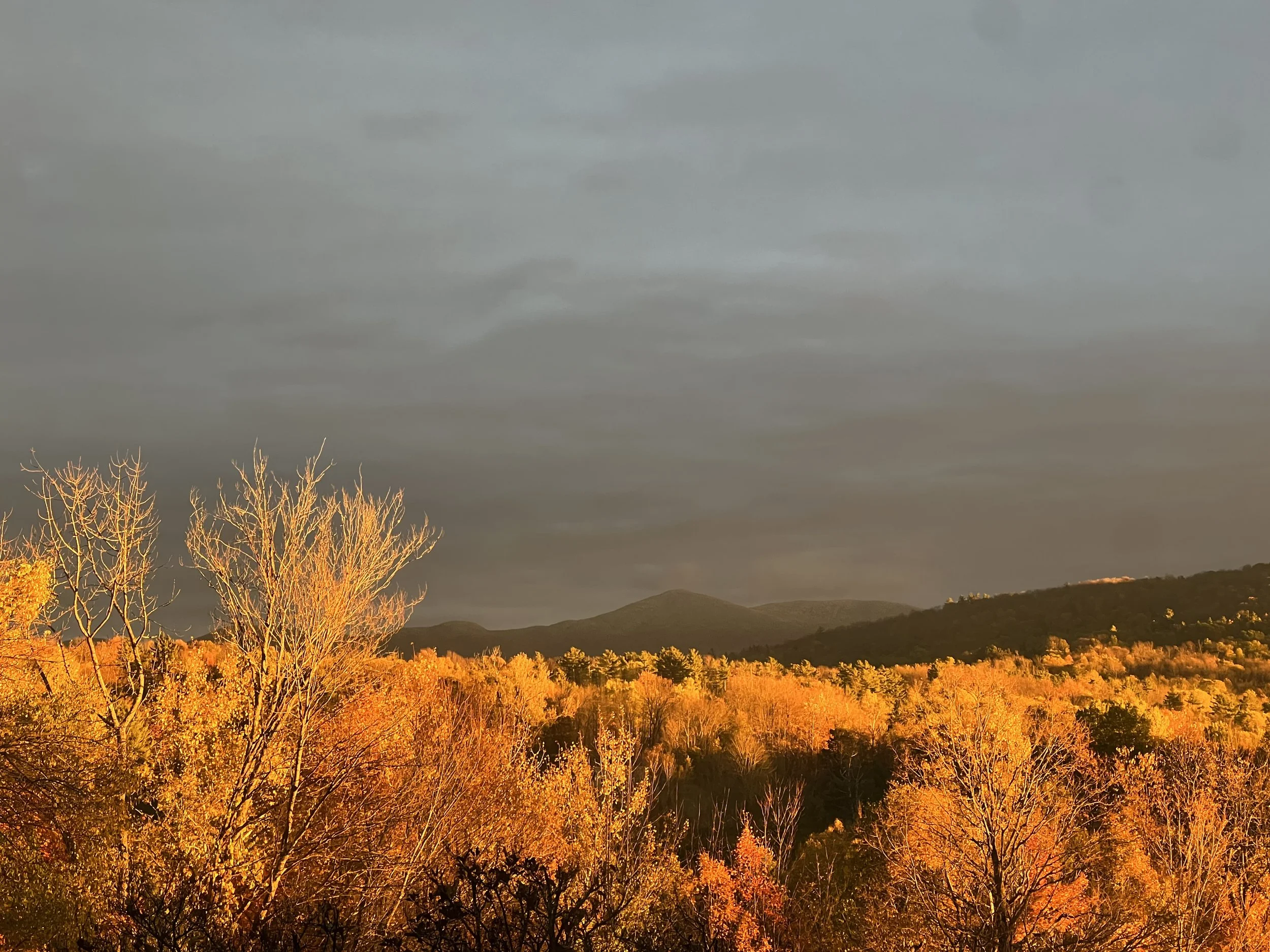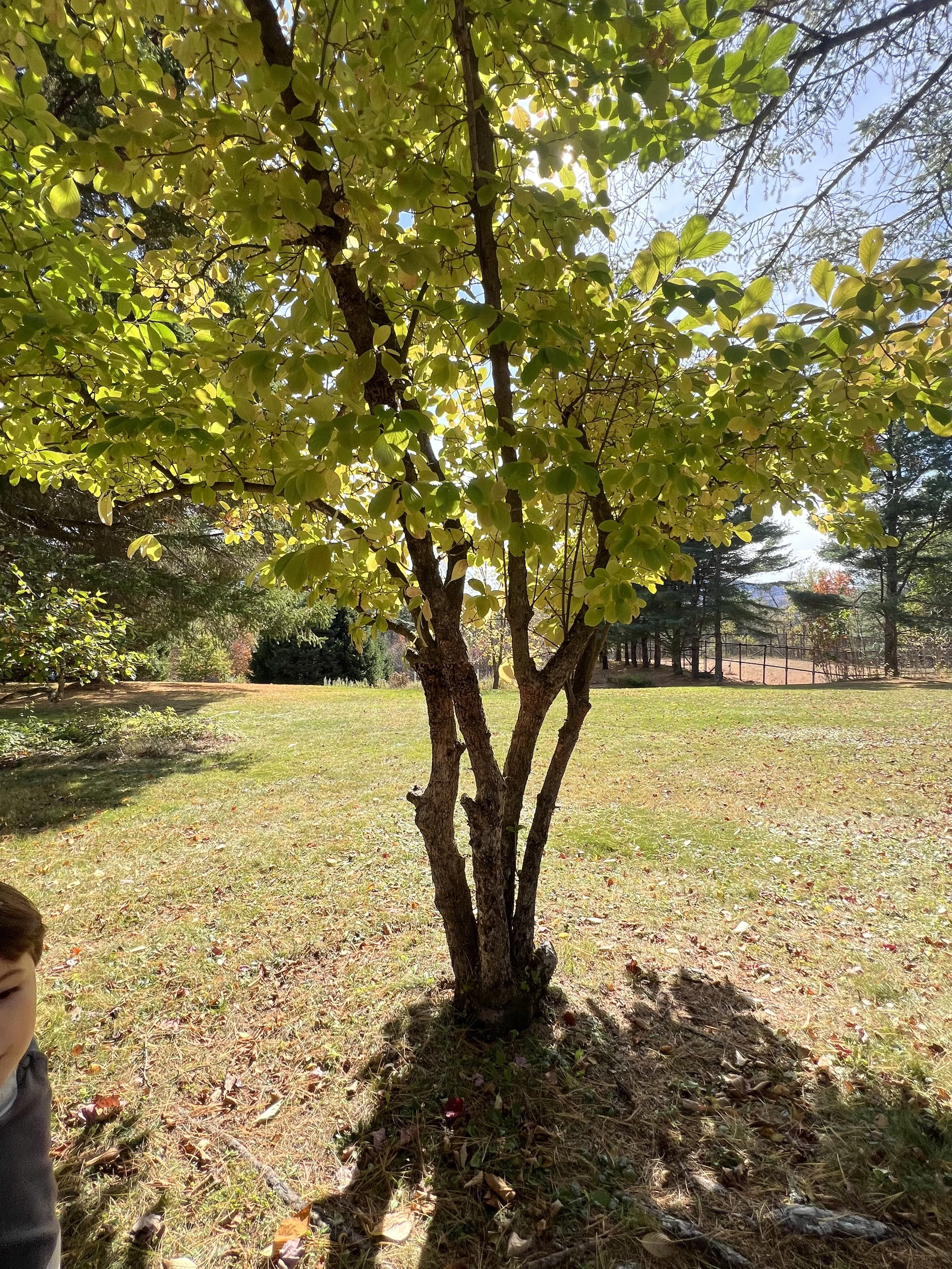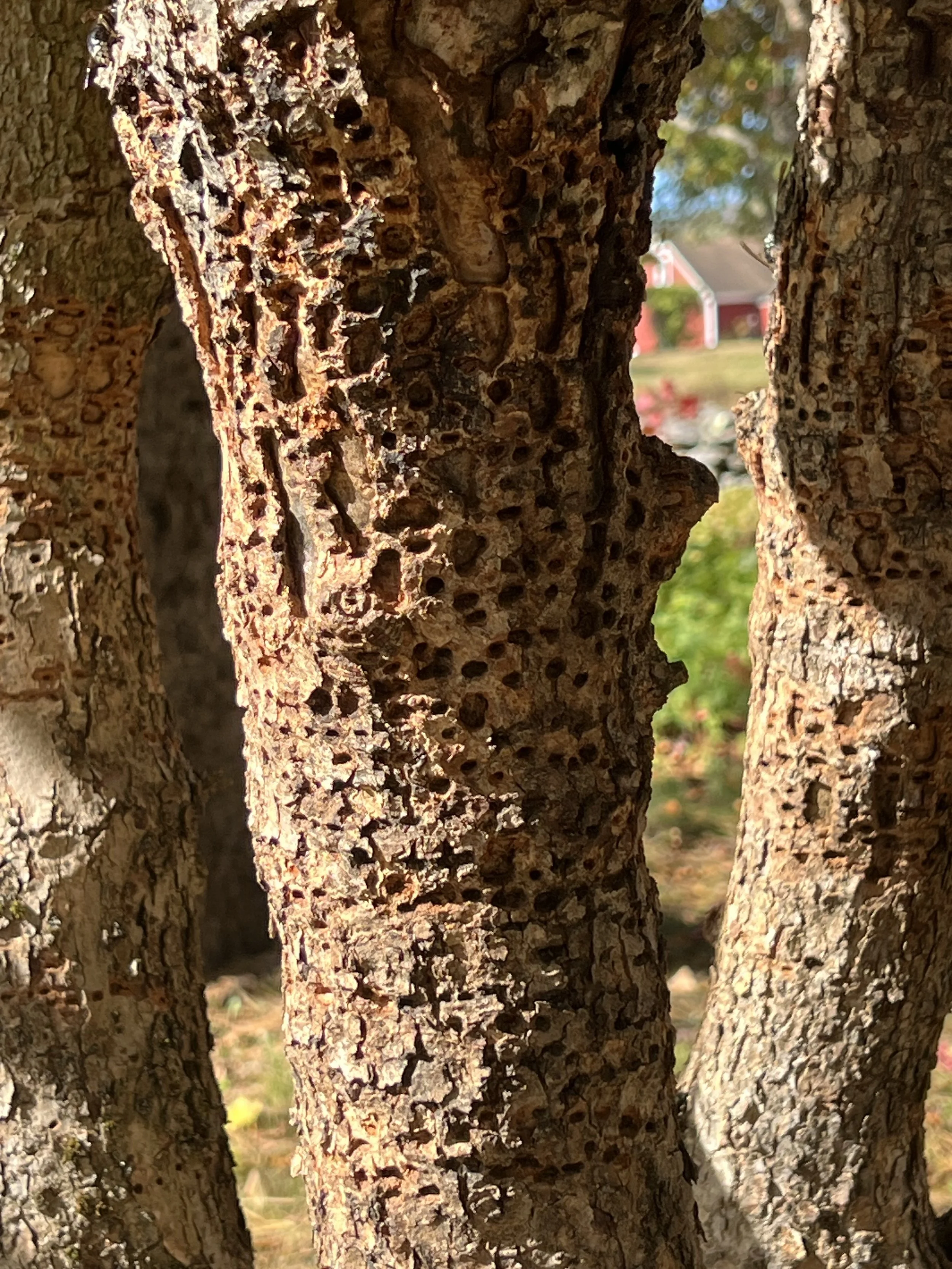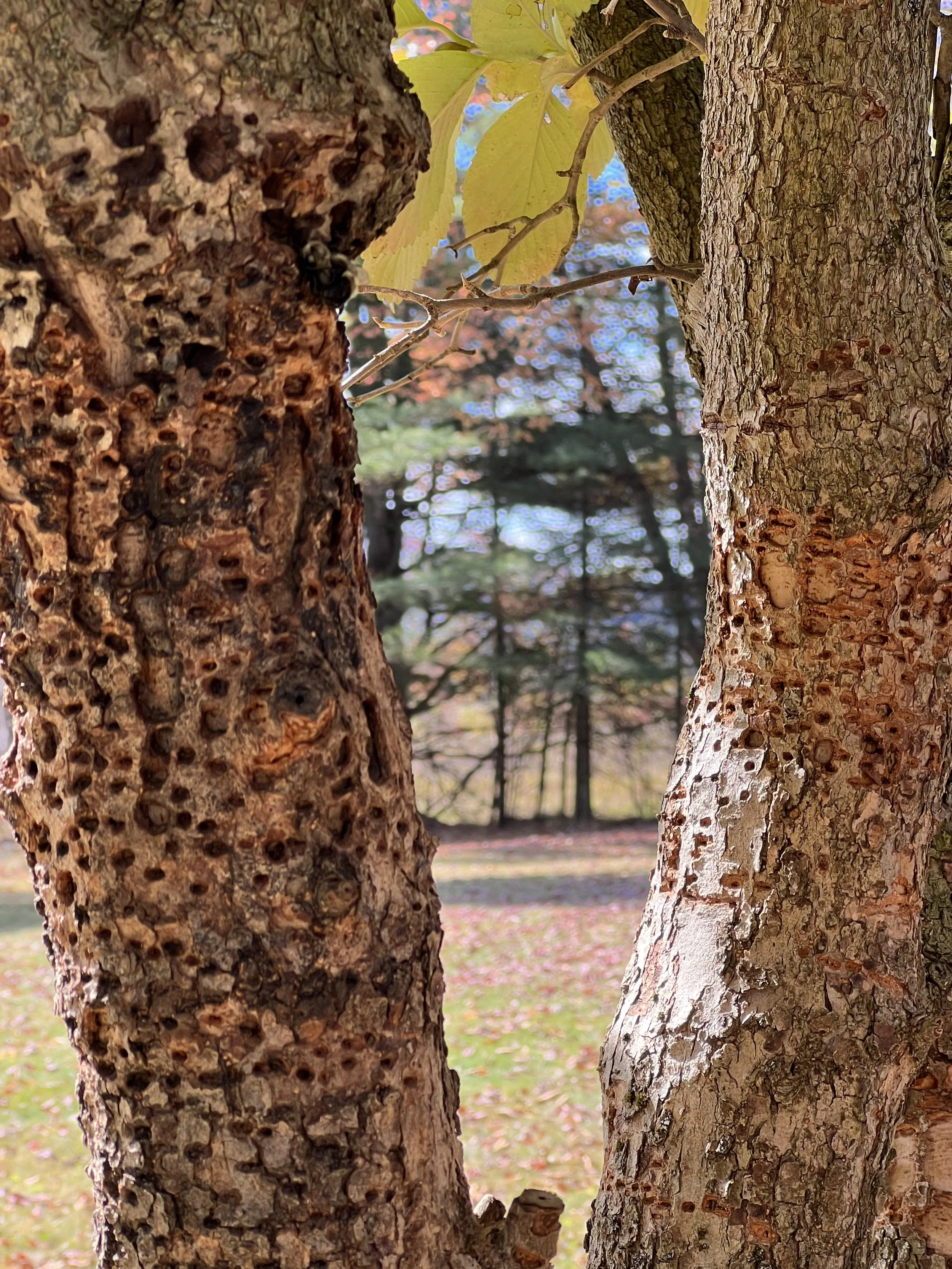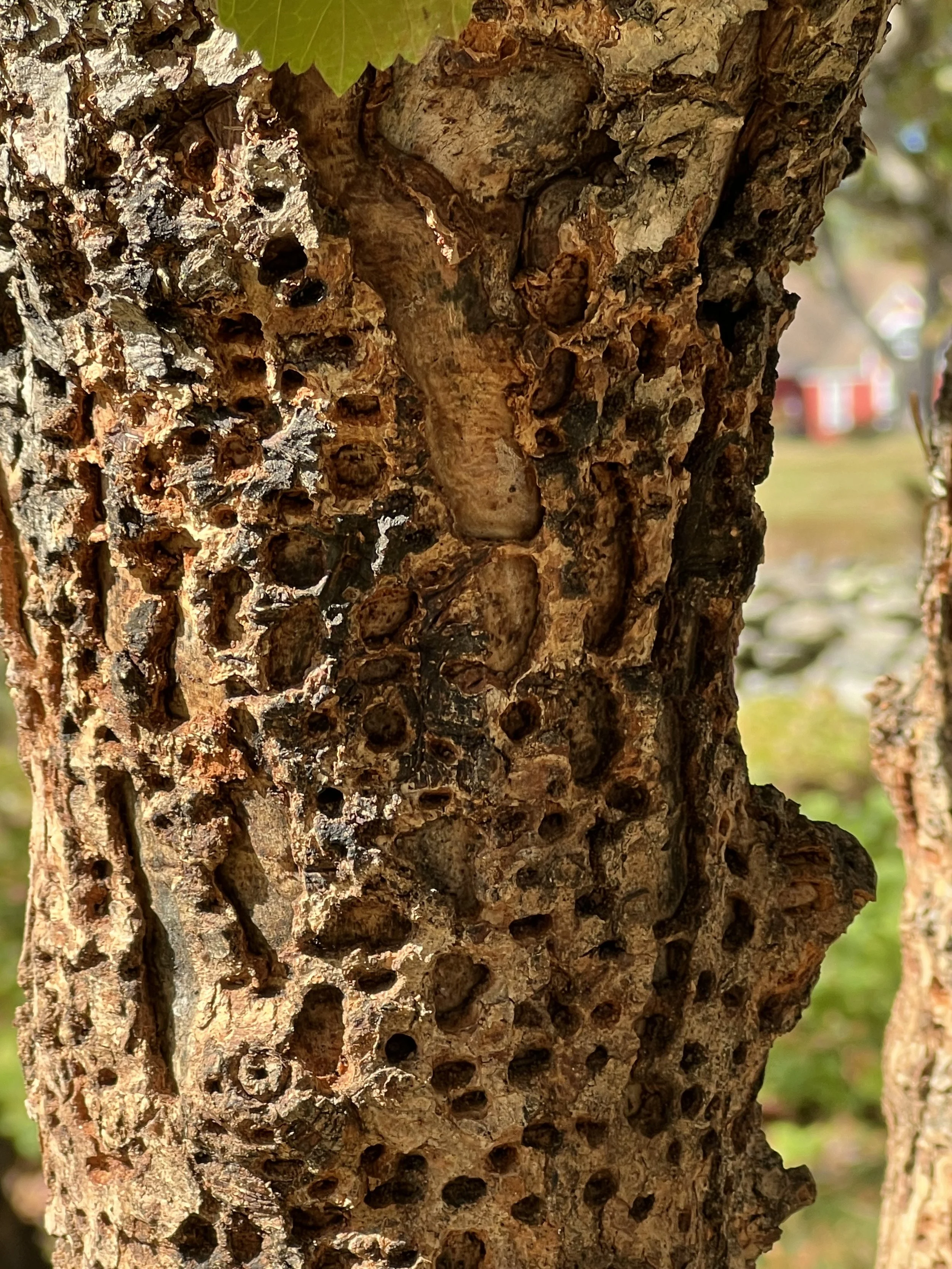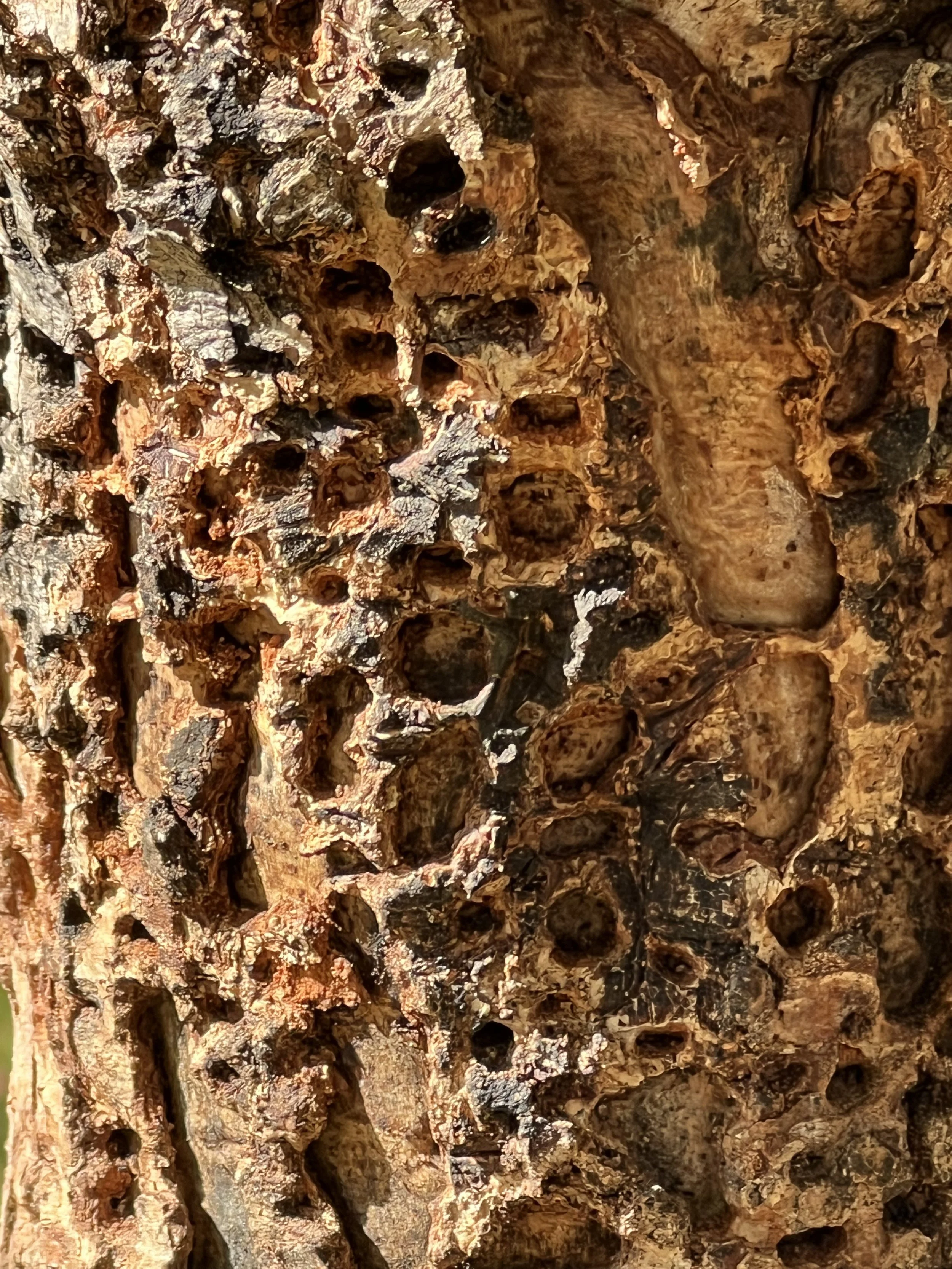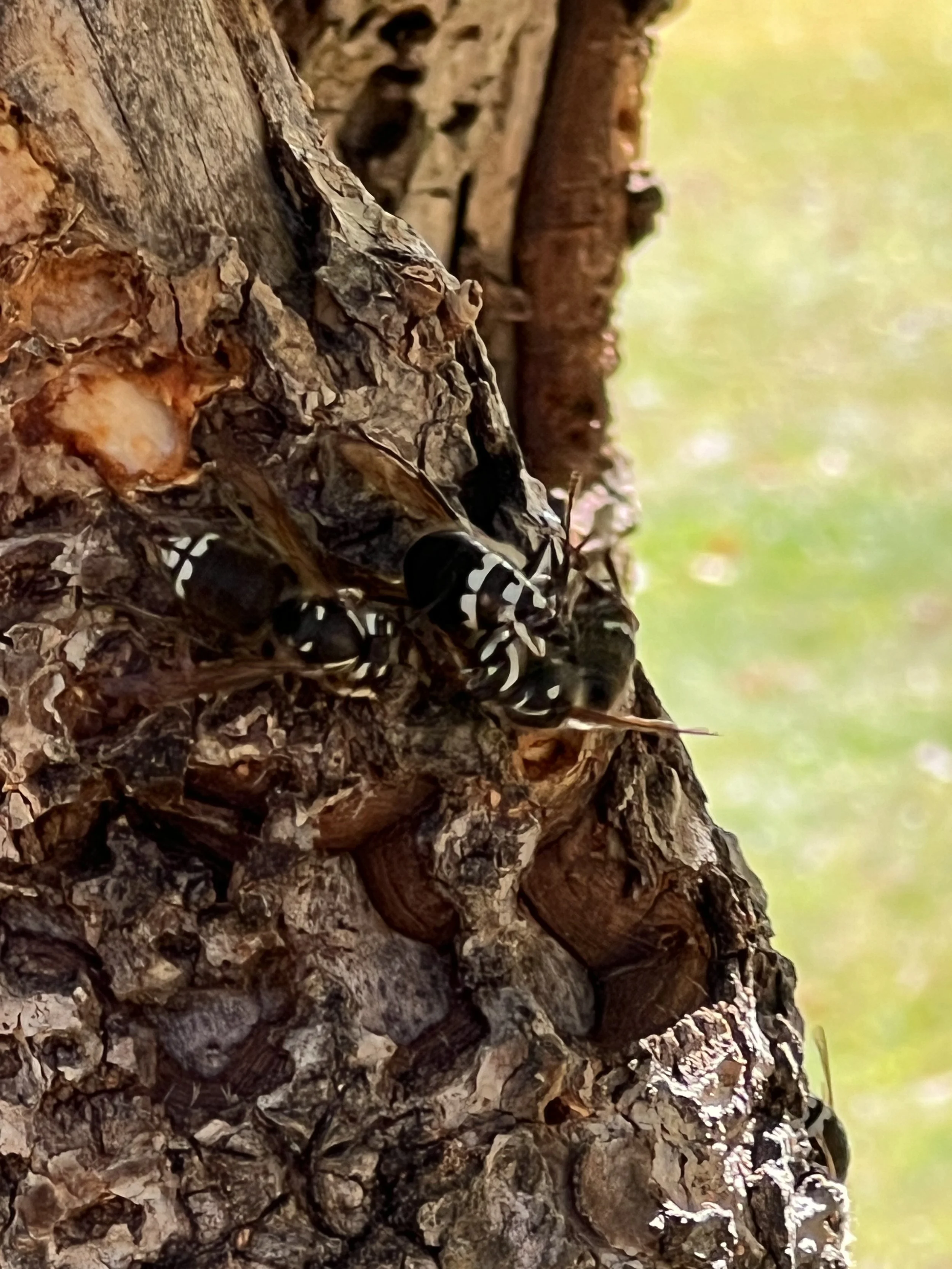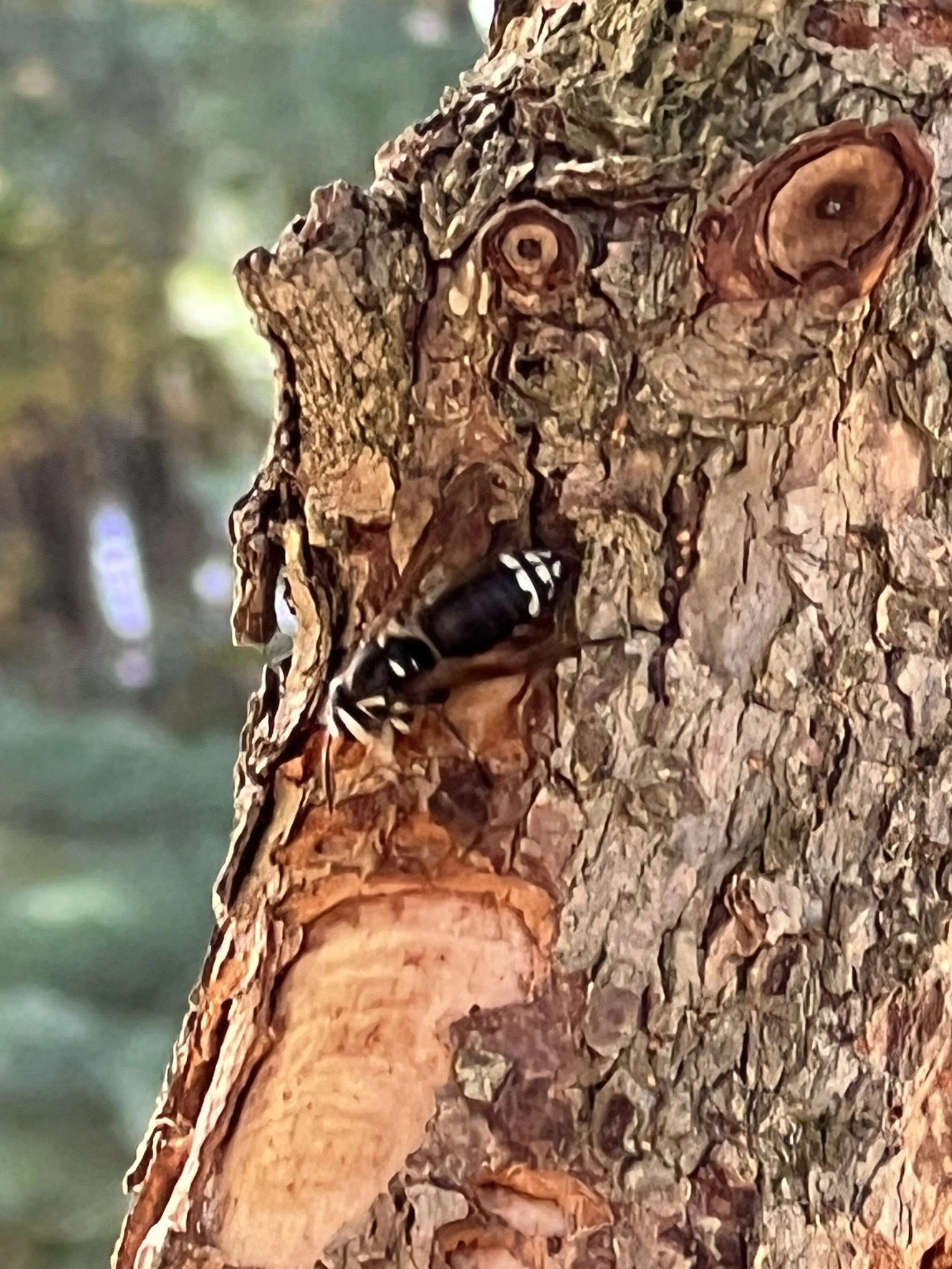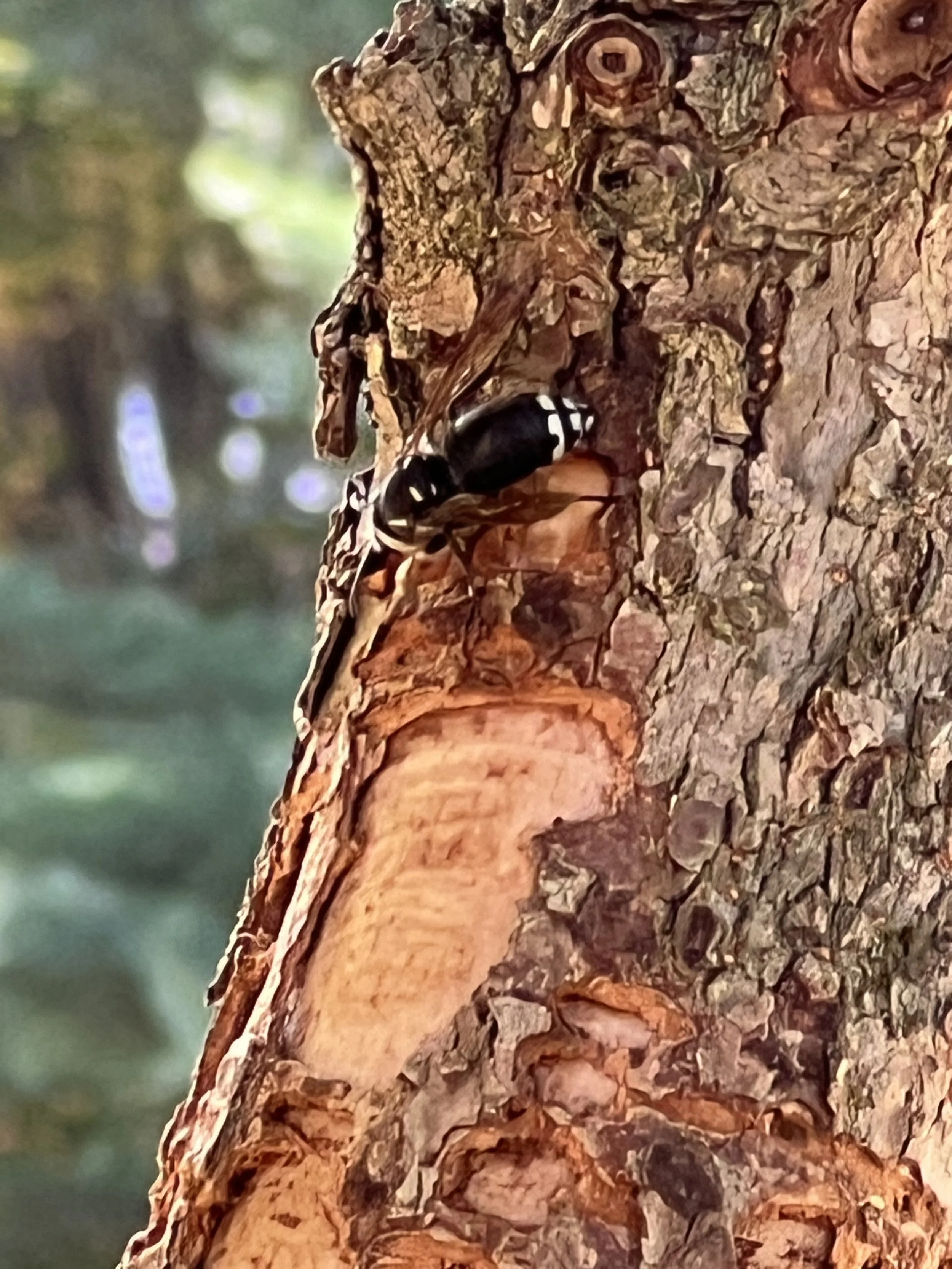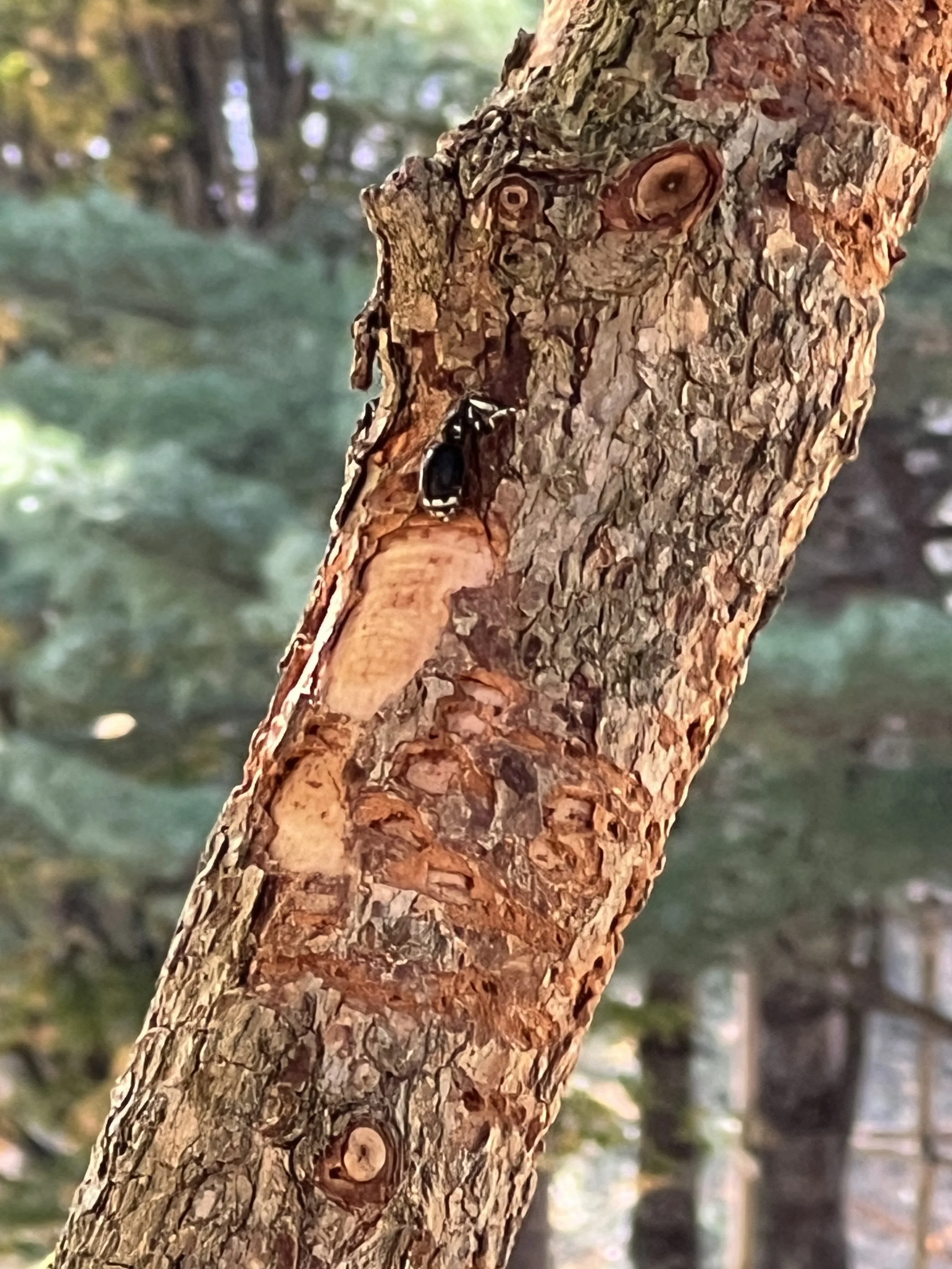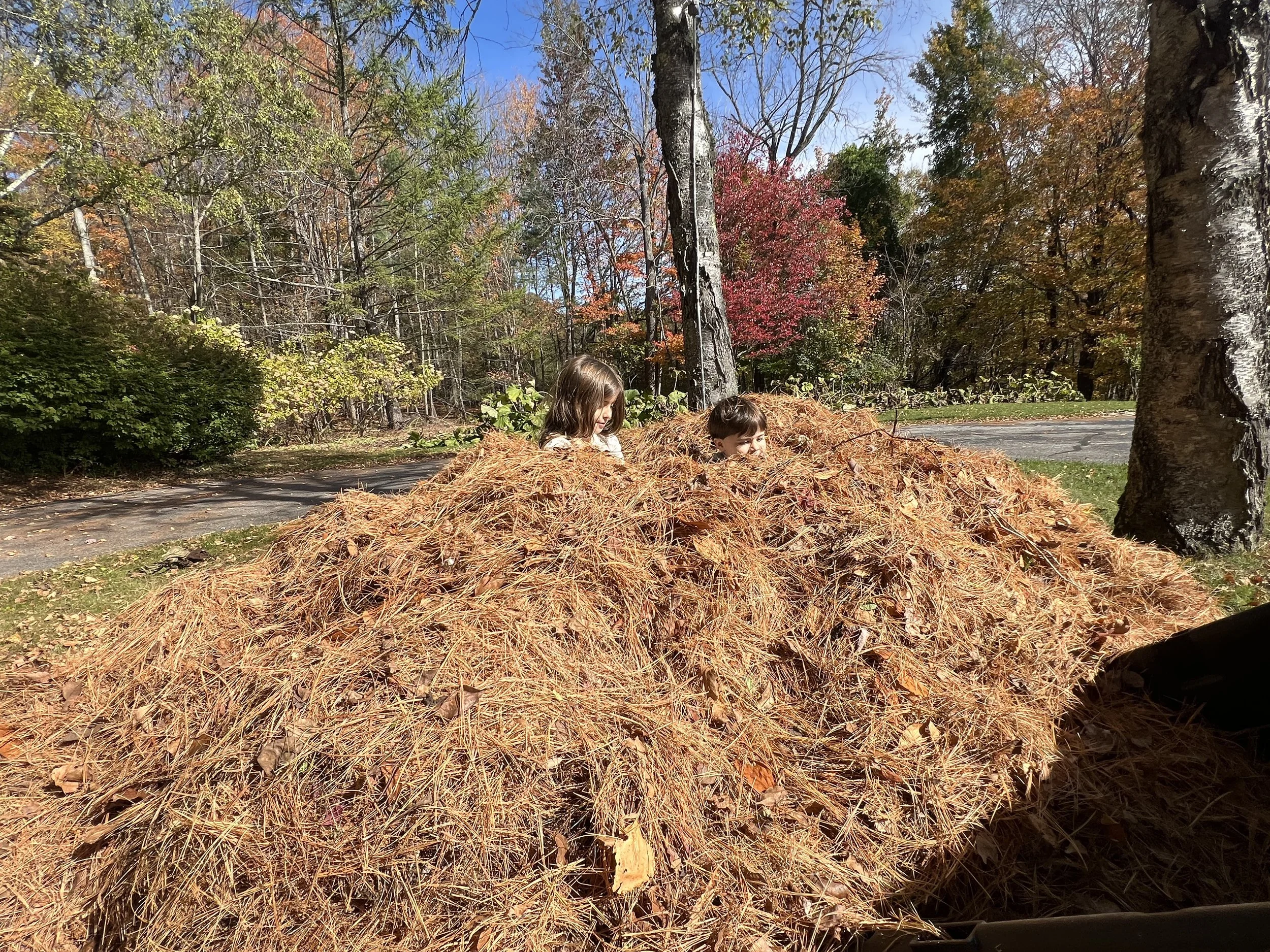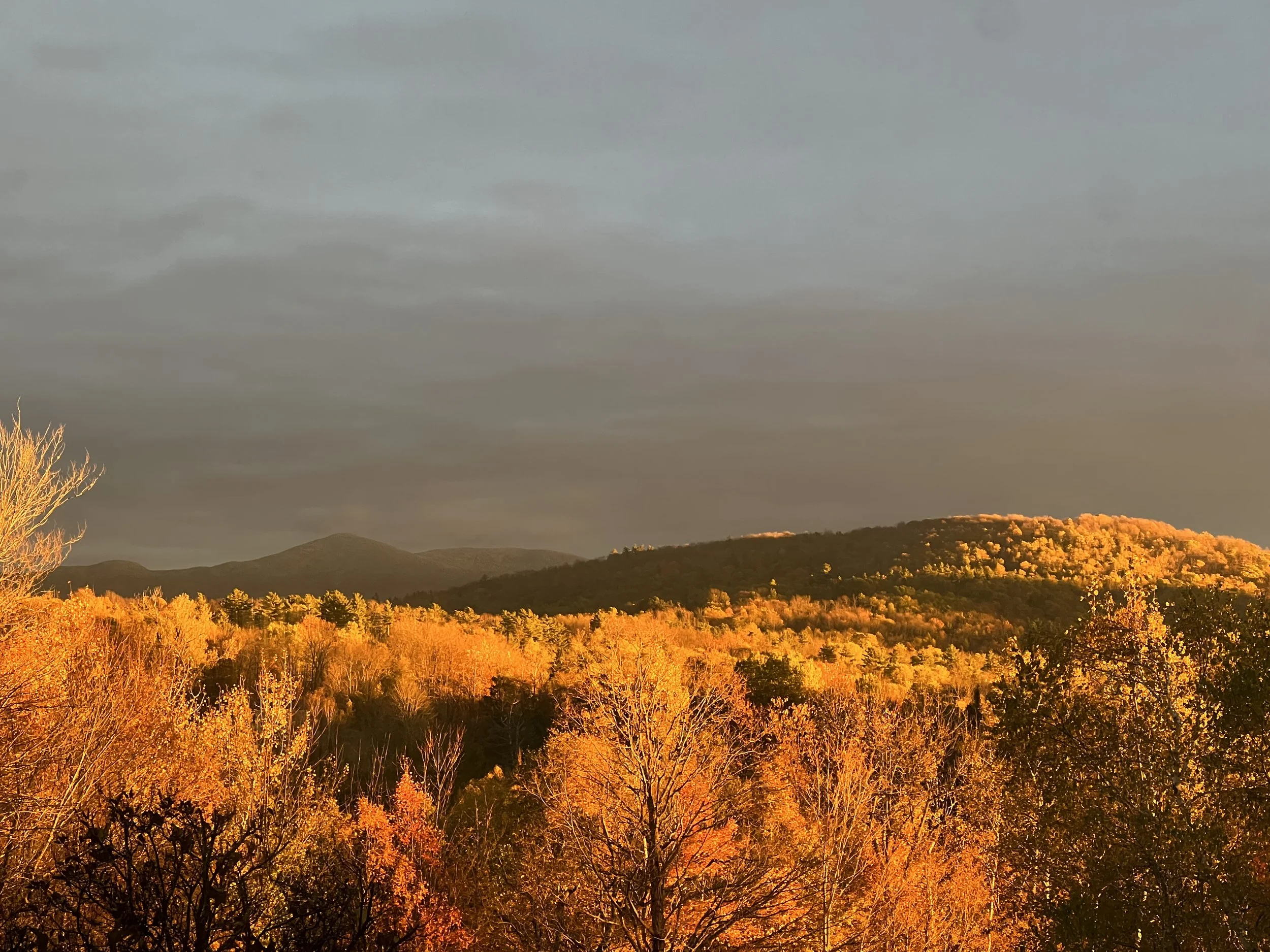Wood Wasps
We spent the weekend raking pine needles. The upper yard — the one up by the road — is lined with massive pines, most of them scarred and pocked from years of attention from our local pileated woodpeckers. The canopy is so thick that the ground below lives in a kind of permanent twilight. Between that shade and the acidity of the constant fall of needles, grass barely survives here.
It’s a tough patch to love, but it’s also the first part of the property anyone sees when they drive by. Every time I walk past it, I can’t help but think: this could be better.
Over the past few weeks, the pines had dropped what felt like an entire forest floor’s worth of needles. The ground wasn’t just covered — it was buried. You couldn’t even tell there was grass under there anymore. So I decided we’d clear it out, just to see what was left.
It was a perfect fall weekend for it - I haven’t been back in the gym since we moved here, and it felt great to get a real workout in. The kids and I fell into a rhythm, raking and hauling load after load to the brush pile with our little ten-cubic-foot lawn cart — a surprisingly resilient piece of equipment that has probably earned as much respect in this family as the mower itself.
The air was cool, the smell of pine sap sharp and clean, and every now and then a gust of wind would send another shower of needles spiraling down like brown snow. It felt good to be out there together, even if the project itself was endless.
At one point, as we zipped past a cluster of pines, Henry shouted, “Dad — bees!”
I hit the brakes and we hopped off the machine to investigate. Sure enough, there were insects — a lot of them. They weren’t coming from the ground, though, as we first assumed. They were coming straight out of the tree trunk.
Dozens of them. Maybe a hundred.
They were big, glossy, and banded in black and white. They looked like some kind of oversized wasp, but their behavior was strange — calm, methodical, almost uninterested in us. There was no nest, no aggression. Just quiet activity along the bark.
I took a few photos and we stepped back. Later that night, I started scrolling through insect ID forums and university extension pages, trying to match what we’d seen. It didn’t take long before I found them: Pigeon Tremex Horntails.
Despite their intimidating appearance, they’re not wasps in the stinging sense — they’re wood wasps, and that long spike on their tails isn’t a stinger but an ovipositor, the tool females use to drill into wood and lay their eggs.
What they were doing on our tree wasn’t building a nest or defending territory. They were laying eggs — hundreds of them, likely — and, in the process, injecting a fungus that helps their larvae digest the wood once they hatch.
The presence of horntails, as we learned, doesn’t mean a tree is being attacked. It means the tree is already in decline. These insects only target wood that’s dead or dying.
And that made sense. The trees up here are weathered, and between the woodpeckers, wind stress, and rot from decades of shade and needle buildup, at least a few of them are probably on their way out. The horntails aren’t villains in this story; they’re the recyclers. Nature’s demolition crew.
We stood there watching for a while, talking about what that meant. How the forest doesn’t really waste anything. When one thing fades, another moves in to turn it back into something new.
The kids were both still wary — “They look like they can sting” — but curiosity was winning out over fear. By the end of it, both kids were crouched down beside me, counting them out loud and narrating what each one was doing.
We’ll keep an eye on the tree, but there’s no need for intervention. If anything, this whole episode was just another reminder that decay isn’t a failure — it’s part of the system.
It’s funny — I started the weekend trying to make the yard look cleaner, neater, more “kept.” But by the end of it, I found myself admiring the mess again. The way the forest manages itself. The way even a dying tree can be full of life.
